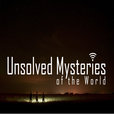Alert 747

Summary: <p>September 22, 1979, there was an incident in the South Atlantic, between South Africa and the Antarctic that today remains a mystery. The incident involves international politics, aeriel phenomenon, cold war satellites, Russian Spies, Secrets and Conspiracies. The incident was so alarming that it was investigated by multiple countries and yet, today, most of these countries remain in the dark about what really happened.</p><br><p>This is Unsolved Mysteries of the World Season Three Episode 9 Alert 747</p><br><p>On the night of September 22, 1979, a U.S. Vela satellite, designed and used for spotting nuclear tests, detected a flash that the U.S. Intelligence Community located somewhere in the South Atlantic area. Using other satellites they pinpointed the region and immediately began a threat assessment operation.</p><br><p>In 1963, the Partial Nuclear Test Ban Treaty banned all test detonations of nuclear weapons on the ground, in the earth’s atmosphere, under water, and in outer space. Underground detonations were not banned, so any nation that wanted to conduct a test detonation was allowed to do that deep beneath the surface of the Earth. The Test Ban Treaty was a result of a growing worldwide anxiety over nuclear fallout, the clear devastating consequences of nuclear explosions. From 1951 to 1958, approximately 270 nuclear tests were conducted by the U.S., the Soviet Union, and Great Britain, and only 22 of those test were conducted underground.</p><br><p>In the same year that the treaty was implemented, the U.S. launched two satellites as a part of the Vela program. Its purpose was to monitor the Earth’s atmosphere and search for signs of illegal nuclear activity. Aside from employing a vast array of sensors that could measure the amount of nuclear fallout in the atmosphere and detect detonations across the globe, the satellites were also equipped with powerful instruments that were used to study various extra-galactic phenomena. In fact, the Vela satellites are credited with the first discovery and measurement of a gamma-ray burst in outer space.</p><br><p>On 22 September 1979, sometime around 3:00am local time, a US <em>Atomic Energy Detection System</em> satellite recorded a pattern of intense flashes in a remote portion of the Indian Ocean. Moments later an unusual, fast-moving ionospheric disturbance was detected by the Arecibo Observatory in Puerto Rico, and at about the same time a distant, muffled thud was overheard by the US Navy’s undersea Sound Surveillance System (SOSUS). Evidently something violent and explosive had transpired in the ocean off the southern tip of Africa.</p><br><p>Data suggested that the incident occurred near Bouvet Island, a frozen scrap of earth famous as the most isolated isle in the world. The tiny island was home to a Norwegian automated weather station, and in 1964 an abandoned lifeboat of unknown origin was found there, filled with supplies. But that is another mystery, saved for another podcast episode.</p><br><p>The event was logged as Vela Alert 747 and the US military was put into high alert. The probability that a nuclear weapon had been detonated in the atmosphere was a treaty violation, and that's big, especially if it was Russia or a rogue Nation not willing to follow the rules outlined in the treaty.</p><br><p>President Jimmy Carter was called to an emergency meeting while the U.S. Air Force dispatched a squadron of Boeing WC-135 planes, specially designed to detect airborne radioactive fallout, to the site.</p><p>After flying for over 230.4 hours, none of the planes detected any radioactive material in the atmosphere. Visually, they could also see no operation going on either near Bouvet Island or on it. There were no foreign ships or planes in the vicinity. There was no evidence of any destruction. The Norwegian automated weather station remained intact and in working order.</p><br><p>At first, the US believed that the Isrealis, who are proven to have nuclear weapons but still, to this day deny it, were responsible for breaking the treaty and conducting a nuclear test. They also believed they were working with South Africa, either providing them with Nuclear secrets or working together to produce bigger, better bombs.</p><br><p>Jimmy Carter wrote in his diary that evening “<em>There was indication of a nuclear explosion in the region of South Africa — either South Africa, Israel using a ship at sea, or nothing.”</em></p><br><p>There was great cause for concern. The treaty was broken, and they believed it was done by what would seem – their allies. How would the world respond? How would the Soviet Union respond? </p><br><p>Both Israel and South African officials denied having anything to do with the incident, and have pointed the finger at Russia, as the state that most likely broke the nuclear treaty. Russia, also, concerned about these new developments denied that they had anything to do with the incident. </p><br><p>President Carter ordered his science advisor, Dr. Frank Press, to assemble a panel of outside experts to look at all the evidence. The panel was chaired by Dr. Jack Ruina, a former head of DARPA. The Ruina Panel issued its report in 1980 and in short, it found the deviances between the light flash recorded by Vela and light flashes from known nuclear detonations too significant, and it found the lack of corroborating data which must exist to be problematic.</p><br><p>The Ruina Panel's conclusion was that the most likely explanation for the Vela Incident was a meteoroid strike on the satellite itself, where the meteor's initial entry into the field of view was responsible for the initial flash, and the spread of debris from the impact responsible for the second flash.</p><br><p>During this time they learned the aging satellite’s electromagnetic pulse (EMP) detector had long ago failed, therefore it was unable to corroborate observations. Vela sister satellite hadn’t detected anything at all, though its working condition at that time was unknown. This frustrated the investigation because they could not accurately conclude what the actual incident was.</p><br><hr><p style="color:grey;font-size:0.75em;"> See <a style="color:grey;" target="_blank" rel="noopener noreferrer" href="https://acast.com/privacy">acast.com/privacy</a> for privacy and opt-out information.</p>